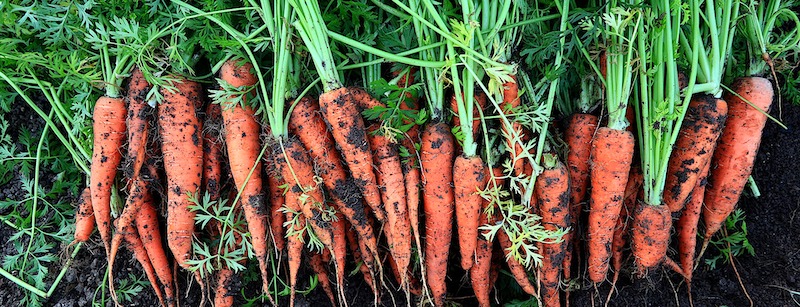I once went to a restaurant in San Luis Obispo called, Eureka, and when searching the menu for burgers to try I noticed a “carrot fed” burger option. I was intrigued by this because I had only heard of grass-fed beef marketing prior to that. Turns out, though, that this is actually something that has been utilized for years. While I can’t expertly say this will be the next hottest marketing trend to hit the beef industry, there is certainly an interest for it and I do think it was really interesting to learn more about and hope that you’ll learn something new about it, too!
Historically, people fed their livestock many kinds of crops to help them meet their nutritional needs. This included root crops, forages, and other things that aren’t common in perhaps a commercial setting. Even as a small producer myself I am feeding traditional kinds of feeds.
Michigan State University Beef Team released a paper with research from a 2008 Cattle Call publication titled Feeding Carrots or Sugar Beets to Cattle that stated “Carrots are quite palatable and readily consumed by cattle. Carrots have 91% the metabolizable energy value of corn, on a DM basis. There is a popular press report that indicates 40% of a feedlot diet DM as carrots did not cause any deleterious affects. Feeding high levels of fresh carrots may cause some scouring which can be minimized by storage for a few weeks. Carrots can also serve as an energy source in cow diets. A report indicated cows will eat up to 35 lb of carrots per day.”

A publication from Washington State University Extension states the proper way to feed carrots to livestock, stating that carrots are nutritious and highly palatable, but can lead to high nitrates in ruminants and must be monitored carefully. “Carrot roots are especially valued for their high beta-carotene content and were historically used as winter feed for dairy cattle to produce yellow coloring in butter and cream (Watson, 1949). Current research indicates that incorporating carrots into the diets of dairy cows increases the amounts of vitamin A and fatty acids in their milk (NaleczTarwacka et al., 2003). Carrots have 85–90% moisture content, 91% of the metabolizable energy of corn (dry matter basis [DM]), 12% dry matter (DM), 84% total digestible nutrients (TDN), and about 10% crude protein (Rust and Buskirk, 2008; Lardy and Anderson, 2009). Feeding rate. Cattle can be fed 40–60 lbs of carrots per day.”
Storing is an important part of feeding your livestock, and WSU Extension suggests “Carrots should be topped prior to storage, but it is not necessary to wash them to enhance storability. Topped carrots can be stored 7–9 months at 32°F and 99% humidity. If stored in unlined bins, carrots can lose up to 10% of their weight due to moisture loss. If carrots are stored in the same area as fruits and vegetables giving off ethylene, the carrots may develop a bitter flavor.”
Not only will you be able to give your cattle a nutritious feed product, but maybe you’ll find a niche market for your carrot-fed beef!
If you’re looking to grow your own carrots for livestock feed go to this link.







